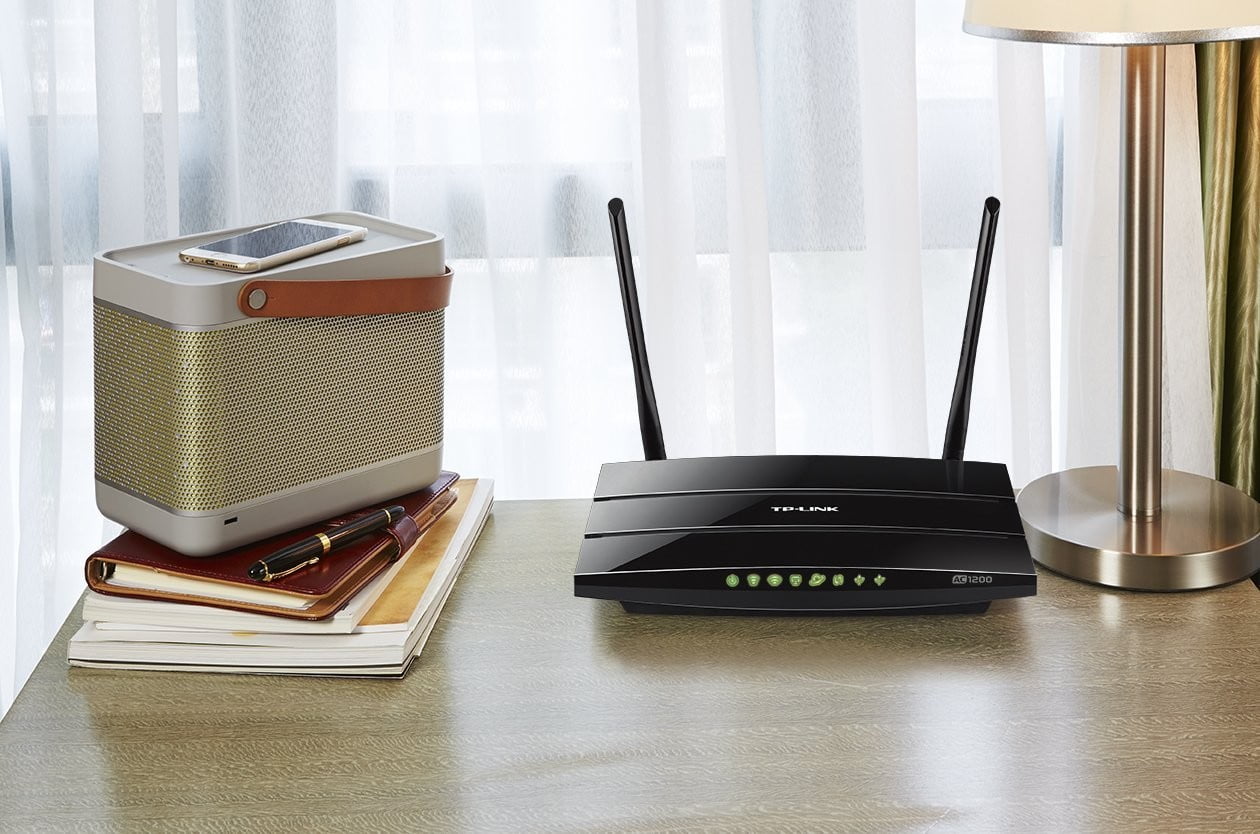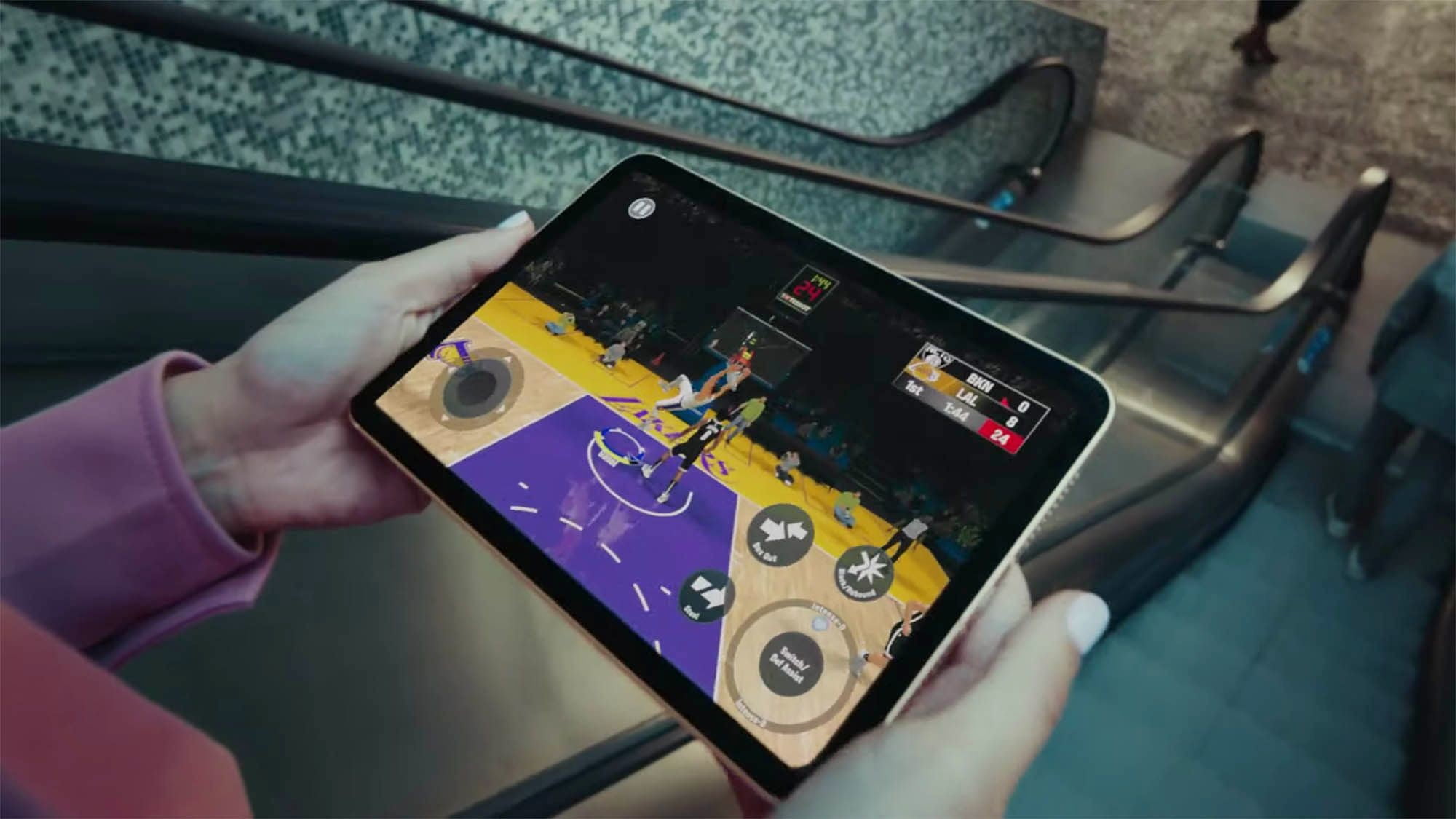Upgrading your router can improve your wireless speed, especially if you stream high-definition videos or play games online. Buying a newer model may also improve wireless coverage, so you can watch and play anywhere in the home or office. Our current favorite is Netgear’s Nighthawk RAX50 AX5400, namely because it packs a ton of great features into a device that remains extremely affordable.
Along with our favorite, we reviewed and compared some of the latest models to select the best wireless routers you can buy right now. Take a look at the recommendations below to get a better idea of which device matches your needs. Whether you’re looking for a Wi-Fi 6 router, a budget-based alternative, or the best router for gaming, we’ve got you covered.
Shopping on a budget? We’ve also rounded up the best wireless router deals available now.
The best wireless routers at a glance
The best wireless router: Nighthawk RAX50 AX5400
Why you should buy this: It’s fully featured, priced competitively, and provides great speed.
Who it’s for: People wanting the best new router for their homes.
Why we chose the Netgear Nighthawk RAX50 AX5400:
If you want a new router that will last for years, it needs to be ready for Wi-Fi 6 — formerly known as Wireless AX and 802.11ax — which delivers many new benefits and important changes. It’s a huge step up from Wireless AC (now Wi-Fi 5) and is backward-compatible with all your current devices. As our devices become W-Fi 6 capable, our routers need to upgrade, too. However, upgrades can be rather expensive.
Fortunately, this six-stream Nighthawk router combines the latest Wi-Fi compatibility with a more affordable price than many alternatives. You can get a better version of the model, but this option is perfectly suitable for the average home while still providing excellent dual-band speeds. Four Gigabit Ethernet ports are included, along with a 1.5GHz three-core processor, USB connections, and WPA3 compatibility for the latest in Wi-Fi security.
The Nighthawk RAX50 AX5400 also is a very smart router: It offers beamforming and Smart Connect to make sure your devices get the attention they need without dead zones, plus OFDMA tech for the most efficient signals possible. It’s even compatible with Amazon’s Alexa if you ever want to control Wi-Fi connections via voice commands — something parents may find handy when making sure their kids are studying, for example.
The best high-performance router: TP-Link Archer AX6600
Why you should buy this: It offers Wi-Fi 6 connectivity without compromising performance.
Who it’s for: Those ready to invest in the latest Wi-Fi technology.
Why we chose the TP-Link Archer AX6600:
Like our first pick, this model supports Wi-Fi 6 — but offers a performance upgrade for those who want to push their routers to do even more.
The Archer AX6600 is an excellent dual-band Wi-Fi 6 router dishing out speeds of up to 4,804Mbps on the 5GHz band and up to 1,148Mbps on the 2.4GHz band. It’s compatible with important new technologies like OFDMA and MU-MIMO, and provides a USB-C port for charging and high-speed data transfers. There are also nine Gigabit Ethernet ports for many wired connections if you prefer even more reliability.
The router includes proprietary technology as well, like software that moves devices between bands if one band gets too crowded. There’s Alexa compatibility, too, so you can perform basic network management actions with voice commands.
Many router manufacturers already offer Wi-Fi 6 models, but the TP-Link Archer AX6600 is particularly versatile. It’s a great fit for home offices or small businesses, or for anyone who has a lot of wireless devices and wants them all performing at the top of their game.
The easiest wireless router to use: Google Nest WiFi

Why you should buy this: It creates a powerful mesh network, perfect for larger homes.
Who it’s for: Anyone who needs a large, uniform network.
Why we chose the Nest WiFi:
Google’s Nest WiFi is an excellent example of a mesh network router, where multiple nodes link together to form a wireless network with bigger, better coverage. The router alone covers 2,200 square feet, but you can bundle it with either one or two “points” to cover up to 5,400 square feet. It’s ideal for large spaces or homes that struggle with heavy interference and dead zones.
The real selling point is its ease of use, however. Unlike many other routers, Nest WiFi makes setting up and managing a home network extremely simple. More than that, each Google Wi-Fi unit also functions as a Google Assistant smart speaker that can play music and control smart home devices.
The $169 router unit includes two Ethernet ports tucked away in a compartment on the bottom — one for the modem and one for other wired devices, like a switch or desktop. The $149 points do not have an Ethernet port, so all wired devices must reside near the router. This also means you can’t wire the router and point together for better throughput.
You can buy a combo pack with the Google Nest WiFi and one point for $269 or the router and two points for $349. You can get the points in white, Mist, and Sand colors.
The best budget wireless router: TP-Link Archer C1200 (2021)
Why you should buy this: Few routers can compete with the TP-Link Archer C1200 at this price.
Who it’s for: Anyone wanting to expand their network on a budget.
Why we chose the TP-Link Archer C1200 (2021):
Looking for a budget router? This $50 model has everything you need without breaking the bank. It’s a perfect fit for a home that only needs a simple net connection for checking email, browsing, and light media streaming.
TP-Link’s Tether app is one of the better router apps for mobile, meaning setting up and managing the router shouldn’t be a hassle. The router itself features AC1200-class dual-band speeds (300Mbps at 2.4GHz and 867Mbps at 5GHz), two USB ports, and Gigabit Ethernet ports. While these specifications aren’t earth-shattering, they are the important basics you need for good wireless connectivity.
If you plan to stream 4K content or perform other data-heavy tasks, then you may want to consider a more powerful model, but the TP-Link Archer C1200 (2021) is an excellent choice for saving money while providing Wi-Fi for all basic tasks.
The best gaming router: Netgear Nighthawk Pro Gaming XR500
Why you should buy this: It prioritizes game services and game data for the best results.
Who it’s for: Gamers and anyone who wants the fastest network possible.
Why we chose the Netgear Nighthawk Pro Gaming XR500:
This AC2600-class router supports speeds of up to 800Mbps on the 2.4GHz band and up to 1,733Mbps on the 5GHz band. To reach those maximum speeds, you’ll need a device that supports four streams.
The XR500 includes a 1.7GHz processor and four Gigabit Ethernet ports. It prioritizes gaming connections and optimizes connections for low-ping gaming on more twitchy shooters. It also helps you connect with a gaming VPN for additional security or regional options. And that’s just the beginning.
The XR500 also gives you more direction customization and connection monitoring. It has even more options like geo-filtering, which lets you pick your favorite servers (where the VPN comes in handy again). There are additional customization options that span all connected devices and give you the power to control each one’s status separately. For example, you can choose each device’s network status while also monitoring your ping simultaneously.
If you need the latest specs and support for Wi-Fi 6, gamers can choose either the upgraded XR700 model or Netgear’s newest Nighthawk Tri-Band WiFi 6E AXE11000 router. The XR700 costs almost twice as much as the Netgear Nighthawk Pro Gaming XR500. Still, if you can shell out for the more expensive XR700, it’s well worth the high cost in terms of performance. If not, the XR500 is still a solid choice that won’t disappoint.
Knowing what to look for is crucial when you’re upgrading your router. Our guide covers the latest models for home use, business applications, and gaming, from budget options to more high-end models. We recommend exploring this guide extensively to ensure that you find the product that best fits your financial limitations as well as your technical needs.
The best mesh router: Netgear Orbi RBK852
Why you should buy this: Mesh routers offer expanded coverage and the latest speeds — this is one of the best available.
Who it’s for: Businesses, offices, and large homes struggling with coverage issues.
Why we chose the Netgear Orbi RBK852:
Mesh router systems include satellite routers designed to work right out of the box with the primary router, allowing them to set up a network with excellent coverage and reliability — in this case, up to 5,000 square feet with the two devices included, plus an additional 2,500 square feet for each new satellite device connected. It’s all managed via the Orbi app too, which makes the setup process much easier than would otherwise be.
While extended coverage and killing dead zones are useful, this Orbi model also brings plenty of speed thanks to its Wi-Fi 6 compatibility, offering up to 6Gbps across three different bands with support for over 100 devices. It also offers Gigabit Ethernet ports on each device for wired connections when necessary. The software allows you to do anything from view the network map of your satellite devices to managing all connected devices and running security sweeps.
While the Netgear Orbi is a particularly strong choice for large areas, public spaces, and hospitality businesses, it’s a lot to ask for a single home to pay over $500 for a mesh router system, even if it’s an excellent one. The Nest Wi-Fi mesh system may be a better option for single-family houses.
Research and buying FAQ
How does a wireless router work?
A wireless router has a wired connection to the modem, the device that connects to the broader internet infrastructure outside your building. The router takes that internet data and turns it into a radio signal (far outside the range of human hearing) that can be broadcast across the surrounding area. Our electronic devices are equipped with receivers that pick up these signals and translate them back into data our devices need to create the content we see, hear, and use on our screens.
What are the various Wi-Fi bands, and what do they represent?
These are radio frequency bands that are specifically set aside to communicate wireless data. The two primary bands are 2.4GHz and 5GHz. Dual-band routers can broadcast Wi-Fi signals on both these bands at once, allowing devices to switch between bands depending on where there is the least interference. Some routers use a second section of the 5GHz band for additional possibilities, so these are called tri-band routers.
The two bands can be broken down further into channels, or narrower sections of the radio spectrum, but this usually isn’t necessary unless you’re doing pinpoint analysis of what frequencies are best in a specific area.
What are the various Wi-Fi protocols, and what do they represent?
Wi-Fi is always undergoing improvement in things like how data is efficiently packaged into radio signals, what security it uses, and how it forms connections with electronic devices. That means that the Wi-Fi protocol — the standards and data formats that routers use — occasionally changes so much that a new protocol is developed to incorporate all the technological advances and, well, level up Wi-Fi.
In the past, Wi-Fi protocols were named after codes like 802.11ac. This refers to the specific IEEE (Institute of Electronic and Electronics Engineers) local area network standards, sort of like citing chapter and page for reference. But when the 802.11ax protocol arrived, there was a broad decision to change the naming conventions and simply call it “Wi-Fi 6” to make things easier for the consumer. The next protocol will almost certainly be called Wi-Fi 7, but that’s still years away.
A router (and receiving devices) needs to be compatible with protocol to use it: Protocols contain a lot of backward compatibility for older devices, but an older router won’t be able to use a new protocol, which is why it’s always important to see what protocol a router has before buying. These days, look for routers branded Wi-Fi 6 or Wi-Fi 6E to enjoy the latest advances. However, if your home broadband plan comes with speeds less than a gigabit, you can save some money by going with a slightly older Wi-Fi 5 router at this time.
What should I look for in a wireless router?
We already mentioned how important Wi-Fi 6 is for our current crop of routers and devices. Other important features to watch for include:
How long does a wireless router last?
Compared to many electronic devices, routers are a long-lived bunch. They can often last for five years or longer without developing any problems that would require a replacement. However, replacing a router every few years is a good way to ensure you are keeping up with the latest technology and security, not to mention Wi-Fi speeds. If you start to see more and more devices supporting a new standard like Wi-Fi 6, that’s an excellent reason to look for a new router. More advanced routers, like home mesh systems, are also smarter than traditional routers. These systems benefit from regular software updates and security patches that are applied at night during downtime, which requires no action on your part. And if you choose, you can check for available software updates through the companion smartphone app. Wi-Fi 7 is currently in development, and routers supporting this standard are not expected to hit the market until 2024.
What is a mesh router?
Routers have long had the ability to expand their signals via repeaters, or devices that take the router signal and replicate it in a different area, reaching more space and fixing problems like dead zones and dropped connections. A mesh router is simply a more advanced, user-friendly version of this idea in one package, allowing home owners to blanket their property with good Wi-Fi coverage and reduce dead zones. Routers like Netgear Orbi and Nest WiFi have a primary router to serve as a hub, and satellite routers made to connect to it. These mesh systems are strong solutions for businesses, venues, and other large areas.
While mesh routers have been a pricey investment in the past, that’s not always true today — Vilo’s latest mesh system starts at $20 for a single router and $60 for a three-pack to extend Wi-Fi signal to remote corners of your home. But you don’t have to buy a dedicated mesh system to get the benefits of this type of network — some manufacturers even allow you to convert traditional routers into a mesh system by purchasing additional main units or satellite nodes and connecting them together to create a mesh network through a smartphone app. One example of this is the ASUS ROG GT-AX11000, which can be used as a stand-alone gaming router or be added to a mesh system.
Can a better router increase your internet speed?
Your internet speed is primarily decided by your provider and local infrastructure. However, a better router can offer many features that remove roadblocks to potential higher speeds or make the speed you experience seem faster. If your current ISP (internet service provider) plan promises speeds that you never see on your Wi-Fi network, try a direct cable connection and run speed tests again. If your speed noticeably improves via a wired connection, that means a better router is more likely to increase your speeds, too.
Even if your broadband speeds never get even close to what’s promised by a Wi-Fi 6 router, there are still several advantages to upgrading. The technology delivers more bandwidth to each device that’s connected, helping to ensure that local transfers aren’t interrupted, and lag is less of a problem. Latency is also reduced, which is a benefit for responsive gaming and augmented reality and virtual reality applications. You can also connect more devices to your network, which will help owners expand their collection of smart home gadgets.
Why would I want a gaming router?
Gaming routers include software that can identify and prioritize gaming connections so they get the bandwidth they need to avoid lag or graphics issues. Some also work to connect to closer servers so that server issues are less likely to occur. These features are not necessary for a satisfactory wireless gaming experience, but if that’s what you use Wi-Fi for, then they are certainly worth looking into. Our Netgear Nighthawk Pro Gaming XR500 pick is a great place to start, but there are other gaming routers at a variety of price levels.


